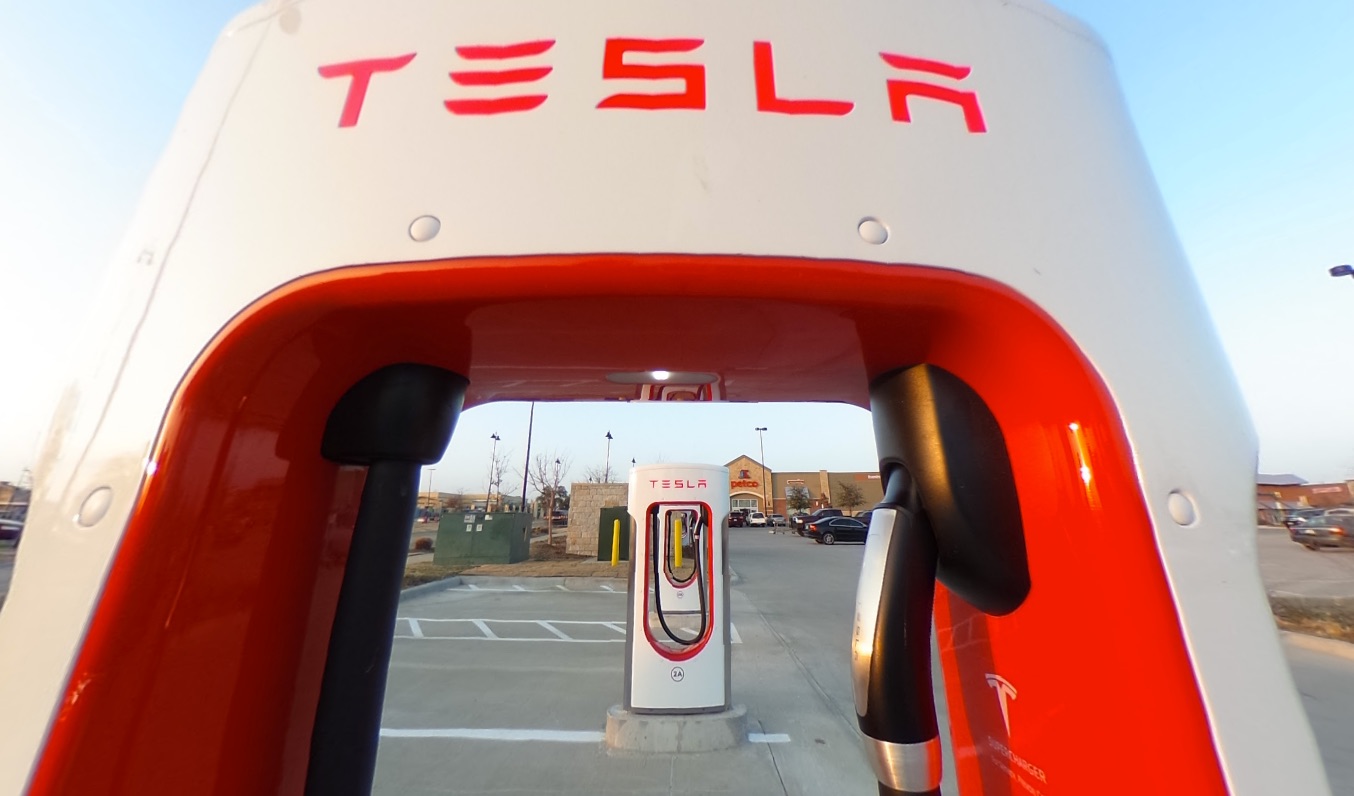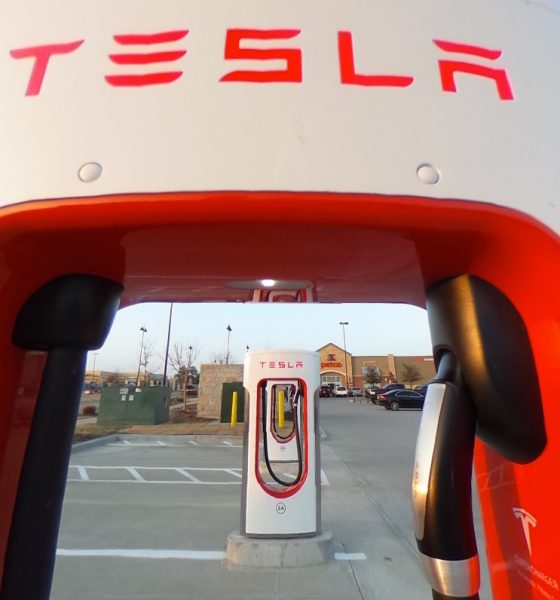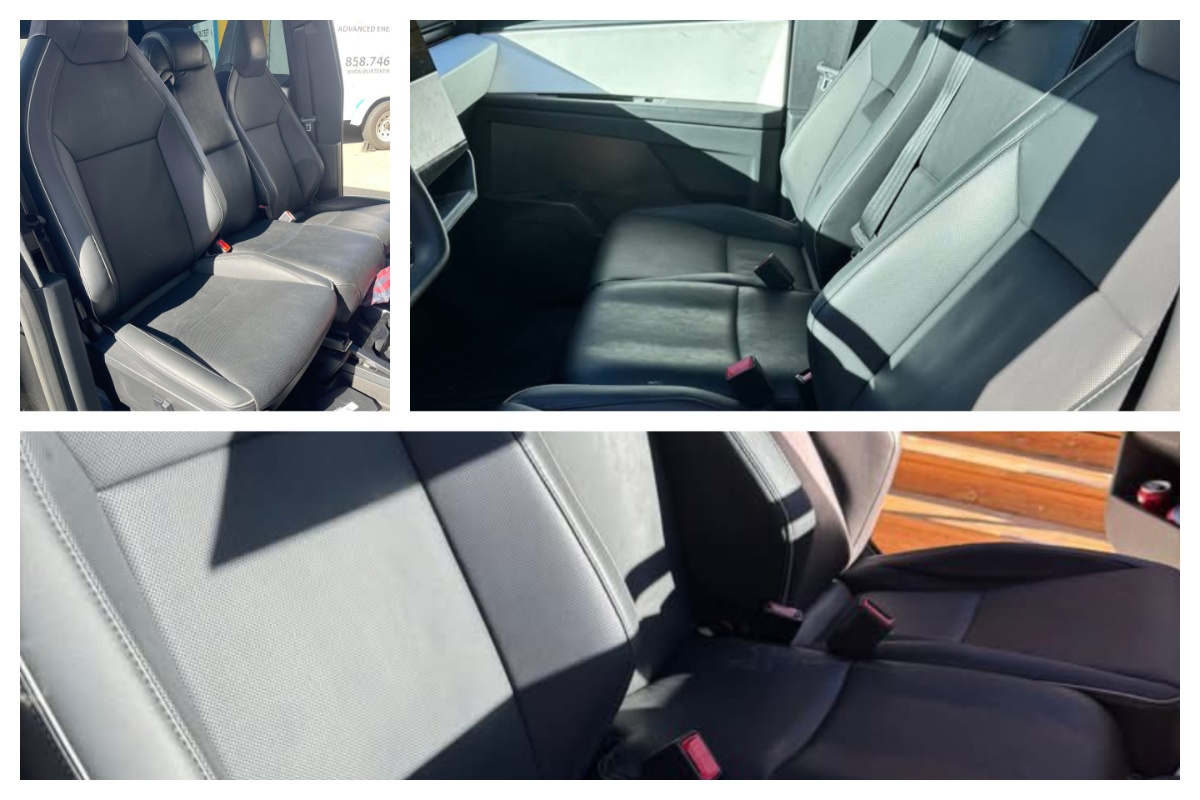

News
Tesla 62-stall Supercharger project in Santa Monica isn’t dead yet
Santa Monica, California City Councilmembers are still interested in Tesla’s 62-stall V3 Supercharger project. Apparently, there is still hope that the project could eventually happen in the future as long as the time and property availability line up with what would be Tesla’s largest V3 Supercharger station in the world.
After Tesla proposed a 62-stall V3 Supercharger site in Santa Monica in early March, the Santa Monica City Council voted 5-2 to approve the site that would bring the automaker’s fastest chargers to the coastal town located in Los Angeles. Santa Monica would officially become the home of the world’s largest V3 Supercharging lot, and LA-based owners were ecstatic regarding the possibilities. Along with the Superchargers, a small lounge would also be available for owners to use the restroom or hang out for a few minutes while their electric car gained some range.
However, just a few days after the site’s approval, the Santa Monica City Council met once again. They scrapped the project in favor of an Emergency Interim Zoning Ordinance that prioritized housing instead of electric vehicle chargers. The ordinance would temporarily reserve any available commercial property for potential housing development, including apartments and condominiums. The ordinance would last between 45 days and two years, depending on an extension process.
Tesla’s largest V3 Supercharger facility is coming to Santa Monica
Now, City Councilmembers indicate that Tesla could still open up the project eventually as long as the scenario is right. Councilmember Kevin McKeown said (via Santa Monica Daily Press):
I’ve already been working with City staff to see if we can get Tesla and the property owner to come back with such a project.”
Unfortunately for Tesla, the timing of the proposal was just off. There wasn’t really much that the automaker could do, especially as housing and reducing displacement remains a priority to the Santa Monica City Council. There are not enough housing options in the Santa Monica area. To prevent displacement of families living in currently-built complexes, the City Council decided that new buildings were the best option. Therefore, Tesla’s project took an unfortunate backseat to make way for new housing opportunities.
The proposed Supercharger location is a perfect location for new, appealing apartment complexes, McKeown added. “The Tesla site is at the intersection of major bus routes, with two bus stops, one on the boulevard and one on 14th Street. And while EV charging is a laudable amenity, one I have championed over the years, it could be done in a mixed-use format that provides housing as well,” the Councilmember said. “If we’d exempted their existing proposal from the temporary commercial-only moratorium, we might instead have had to swap into our Housing Element Suitable Sites Inventory other parcels where residents live currently. I’d prefer to both protect current residents from redevelopment of their homes for what would likely be less-affordable housing, albeit more of it, and provide EV charging in a format that makes wiser use of scarce land in a crucial location.”
Tesla employee Noelani Derrickson petitioned to have Tesla’s Supercharger project exempted from the Emergency Ordinance. Derrickson said Tesla has been working closely with the Santa Monica planning staff for over six months, highlighting the advantages a Supercharger station would have in the location that was proposed. The councilmember said, “Tesla has been working closely with Santa Monica planning staff for over half a year now on a Tesla electric vehicle fast-charging station that includes solar energy and battery storage within the mid-city neighborhood.”
Derrickson’s argument persuaded the fellow Councilmembers to unanimously vote on a temporary hold for commercial projects like Tesla’s Supercharging station and other automotive dealerships. This alone proves that the Supercharging facility may not be dead after all. It just may come a tad later than expected.

Cybertruck
Tesla Cybertruck undergoes interior mod that many owners wanted

Tesla Cybertruck is significantly different from traditional pickups on the market in a lot of ways. However, one feature that was recently modified with its interior was a highly requested characteristic that is present in other trucks, but was void from Cybertruck.
Tesla went with a five-seat configuration with Cybertruck: two in the front and three in the back. The spacious interior is matched with plenty of storage, especially up front, as a pass-through, center console, and other storage options, but some Tesla fans wanted something different: bench seating.
Bench seating is popular in many full-size pickups and allows three passengers to sit up front. The middle seat is usually accompanied by a fold-down storage unit with cupholders.
Tesla decided to opt for no bench seating up front, despite the fact that it equipped bench seating in the unveiling in 2019. Interior photos from the unveiling event from nearly six-and-a-half years ago show Tesla had originally planned to have a six-seat configuration.
This was adjusted after the company refined the design:

(Tesla Cybertruck interior configuration in 2019)
Despite Tesla abandoning this design, it does not mean owners were willing to accept it. One owner decided to modify their Tesla Cybertruck interior to equip that third seat between the driver’s and passenger’s thrones.
The fit is snug, and while it looks great, it is important to remember that this does not abide byregulations, as it would require an airbag to be technically legal. Please do not do this at home with your own Cybertruck:
- Credit: @blueskykites
- Credit: @blueskykites
- Credit: @blueskykites
The Cybertruck is a popular vehicle in terms of publicity, but its sales have been underwhelming since first delivered to customers back in 2023. It’s hard to believe it’s been out for two-and-a-half years, but despite this, Tesla has not been able to come through on its extensive order sheet.
This is mostly due to price, as Cybertruck was simply not as affordable as Tesla originally planned. Its three configurations were initially priced at $39,990, $49,990, and $69,990. At release, Cybertruck was priced above $100,000.
This priced out many of those who had placed orders, which is the main reason Cybertruck has not lived up to its expectations in terms of sales. The adjustments to the specific features, like the removal of the bench seat, likely did not impact sales as much as pricing did.
This modification shows some creativity by Tesla owners, but also shows that the Cybertruck could always be the subject of a potential refresh to include some of these features. Tesla routinely adjusts its vehicle designs every few years, so maybe the Cybertruck could get something like this if it chooses to refresh its all-electric pickup.
Elon Musk
Tesla CEO Elon Musk drops massive bomb about Cybercab
“And there is so much to this car that is not obvious on the surface,” Musk said.

Tesla CEO Elon Musk dropped a massive bomb about the Cybercab, which is the company’s fully autonomous ride-hailing vehicle that will enter production later this year.
The Cybercab was unveiled back in October 2024 at the company’s “We, Robot” event in Los Angeles, and is among the major catalysts for the company’s growth in the coming years. It is expected to push Tesla into a major growth phase, especially as the automaker is transitioning into more of an AI and Robotics company than anything else.
The Cybercab will enable completely autonomous ride-hailing for Tesla, and although its other vehicles will also be capable of this technology, the Cybercab is slightly different. It will have no steering wheel or pedals, and will allow two occupants to travel from Point A to Point B with zero responsibilities within the car.
Tesla shares epic 2025 recap video, confirms start of Cybercab production
Details on the Cybercab are pretty face value at this point: we know Tesla is enabling 1-2 passengers to ride in it at a time, and this strategy was based on statistics that show most ride-hailing trips have no more than two occupants. It will also have in-vehicle entertainment options accessible from the center touchscreen.
It will also have wireless charging capabilities, which were displayed at “We, Robot,” and there could be more features that will be highly beneficial to riders, offering a full-fledged autonomous experience.
Musk dropped a big hint that there is much more to the Cybercab than what we know, as a post on X said that “there is so much to this car that is not obvious on the surface.”
And there is so much to this car that is not obvious on the surface
— Elon Musk (@elonmusk) January 2, 2026
As the Cybercab is expected to enter production later this year, Tesla is surely going to include a handful of things they have not yet revealed to the public.
Musk seems to be indicating that some of the features will make it even more groundbreaking, and the idea is to enable a truly autonomous experience from start to finish for riders. Everything from climate control to emergency systems, and more, should be included with the car.
It seems more likely than not that Tesla will make the Cybercab its smartest vehicle so far, as if its current lineup is not already extremely intelligent, user-friendly, and intuitive.
Investor's Corner
Tesla Q4 delivery numbers are better than they initially look: analyst
The Deepwater Asset Management Managing Partner shared his thoughts in a post on his website.

Longtime Tesla analyst and Deepwater Asset Management Managing Partner Gene Munster has shared his insights on Tesla’s Q4 2025 deliveries. As per the analyst, Tesla’s numbers are actually better than they first appear.
Munster shared his thoughts in a post on his website.
Normalized December Deliveries
Munster noted that Tesla delivered 418k vehicles in the fourth quarter of 2025, slightly below Street expectations of 420k but above the whisper number of 415k. Tesla’s reported 16% year-over-year decline, compared to +7% in September, is largely distorted by the timing of the tax credit expiration, which pulled forward demand.
“Taking a step back, we believe September deliveries pulled forward approximately 55k units that would have otherwise occurred in December or March. For simplicity, we assume the entire pull-forward impacted the December quarter. Under this assumption, September growth would have been down ~5% absent the 55k pull-forward, a Deepwater estimate tied to the credit’s expiration.
“For December deliveries to have declined ~5% year over year would imply total deliveries of roughly 470k. Subtracting the 55k units pulled into September results in an implied December delivery figure of approximately 415k. The reported 418k suggests that, when normalizing for the tax credit timing, quarter-over-quarter growth has been consistently down ~5%. Importantly, this ~5% decline represents an improvement from the ~13% declines seen in both the March and June 2025 quarters.“
Tesla’s United States market share
Munster also estimated that Q4 as a whole might very well show a notable improvement in Tesla’s market share in the United States.
“Over the past couple of years, based on data from Cox Automotive, Tesla has been losing U.S. EV market share, declining to just under 50%. Based on data for October and November, Cox estimates that total U.S. EV sales were down approximately 35%, compared to Tesla’s just reported down 16% for the full quarter. For the first two months of the quarter, Cox reported Tesla market share of roughly a 65% share, up from under 50% in the September quarter.
“While this data excludes December, the quarter as a whole is likely to show a material improvement in Tesla’s U.S. EV market share.“











